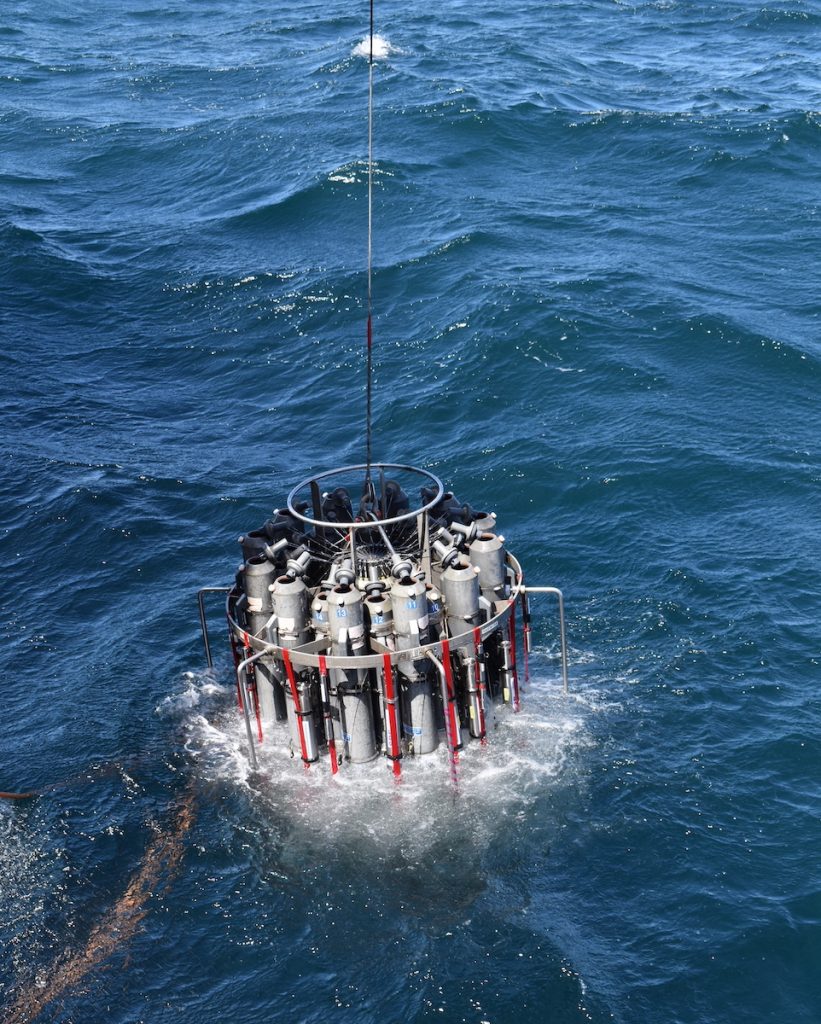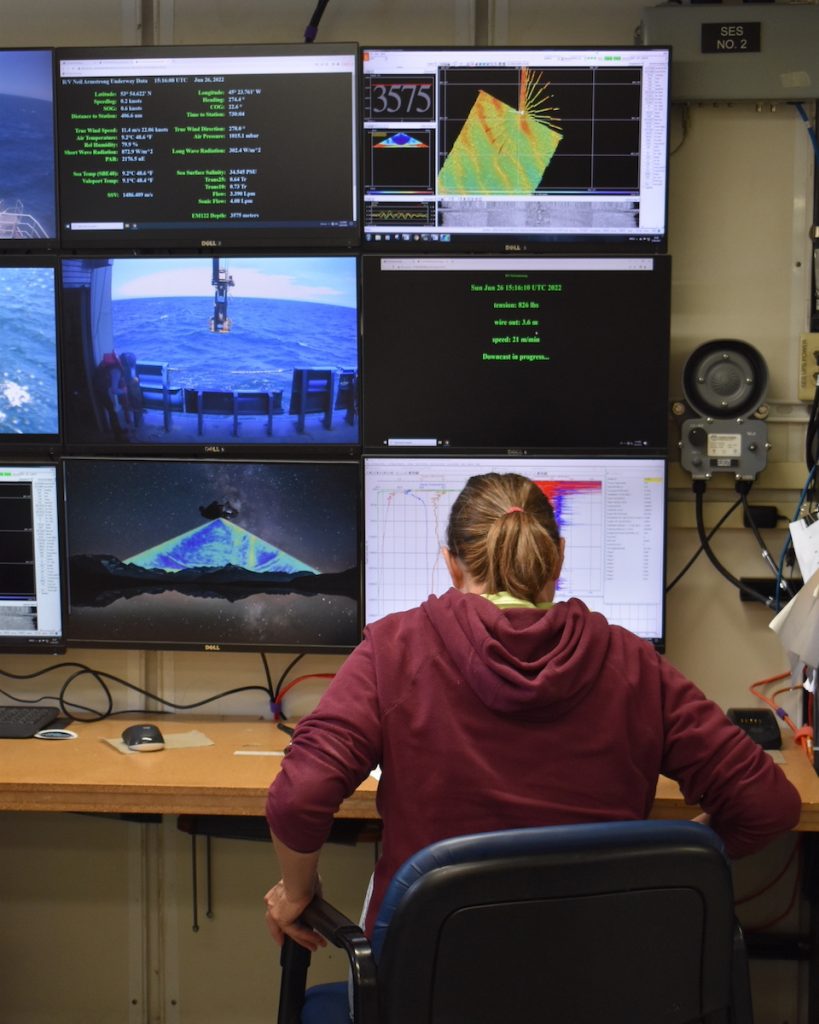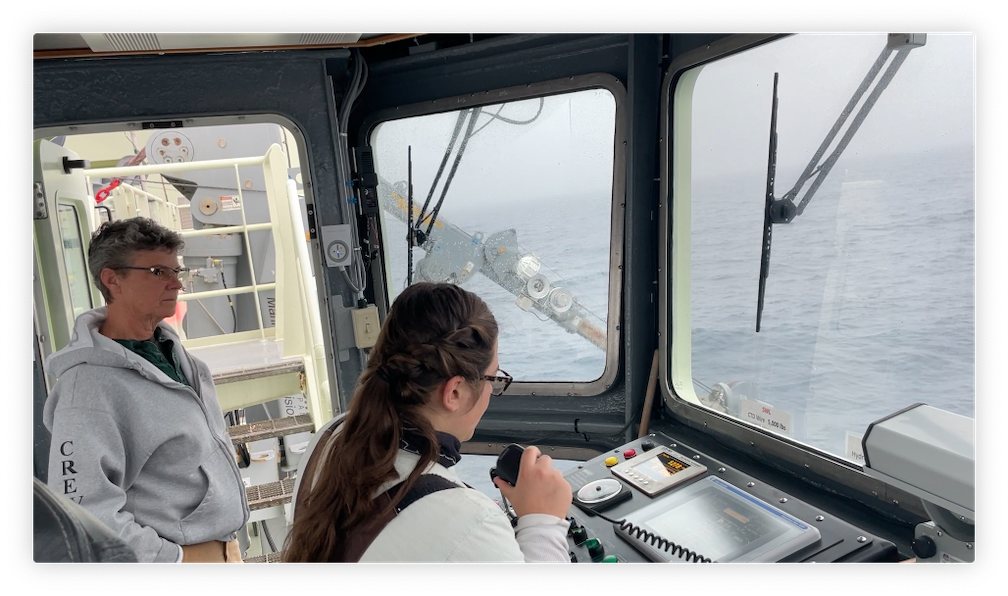CTD casts

A CTD rosette lowered into the Irminger Sea by the team abord the R/V Neil Armstrong.
Credit: Sheri N. White©WHOI
CTD casts are performed alongside many other scientific operations in order to validate incoming data and to calibrate instruments, they can also be performed in sea and weather conditions when other science operations like mooring deployments and recoveries cannot.
Regardless of the sea state, performing these casts require teamwork and communication between the science party, the CTD winch operator and the mate(s) on the bridge. The mate on the bridge positions the ship into the swell or wind and with the current to ensure the rosette drops as straight down as possible with the wire remaining perpendicular to the sea surface. This is critical for gathering accurate depth data and distance measurements from CTD to sea floor, to minimize excess tension on the wire, crane and connection points – and to prevent the rosette or wire from coming into contact with the ship or seafloor.

Hydrographer, Leah Houghton, monitors incoming CTD data and fires Niskin bottles throughout the rosette’s cast to collect water samples, while communicating with the crane operator and bridge via radio. Credit: Sheri N. White©WHOI
Once the CTD rosette is back on board with Niskin bottles full of water, the hydrographer collects samples for particular measurements. Oxygen and salinity measurements are analyzed on board. Water samples for measuring dissolved carbon, pH and nutrients are collected and stored for analysis on shore. Chlorophyll samples are collected by filtering water through fine filters which are stored frozen for analysis on shore.

CTD winch operator Ella Strano communicates with Leah Houghton in the Main Lab during a CTD Cast while Dee Emrich looks on. Credit: Sheri N. White©WHOI